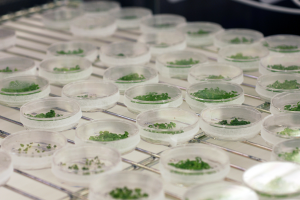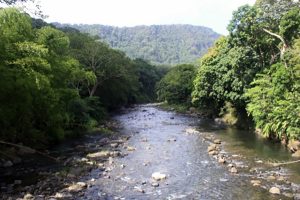Has Pluto been replaced by a primordial black hole?
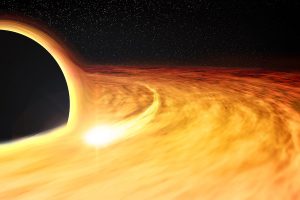
When I was young, Pluto was still classed as a planet and nine was my lucky number; so I really liked that we had nine planets in our solar system – it made it easy for me to remember. My love of astronomy out-lasted Pluto’s status as a planet, and as I write this I am actually wearing a solar system necklace; each planet is represented, yet it only has eight planets on it.
I miss Pluto. I feel the loss especially when the children I do outreach with in schools ask me ‘Where has Pluto gone? What happened to it?’, the children seem to think the International Astronomical Union (IAU) actually forced it out of the solar system physically rather than just downgrading it in name to a ‘dwarf planet’ in 2006.
So when I saw a new research paper1 uploaded online that was called ‘What if Planet 9 is a Primordial Black Hole?’, my interest was piqued. At the time I didn’t know that there was a theorised ‘Planet 9’ at all. And my only knowledge of primordial black holes is that the newspapers said the Large Hadron Collider would create them on Earth when they turned it on back in 2008 (thankfully it did not!)
It turns out ‘Planet 9’ has been theorised since 1906, but back then Percival Lowell who was looking for it called it ‘Planet X’. It is thought to have an elliptical orbit and at the furthest point of it’s orbit it is 13-26 times further away than Neptune is from the Sun. This planet, although never observed, would explain the strange orbits of minor planets in our solar system beyond Neptune, like Pluto, Eris, Makemake and Sedna.
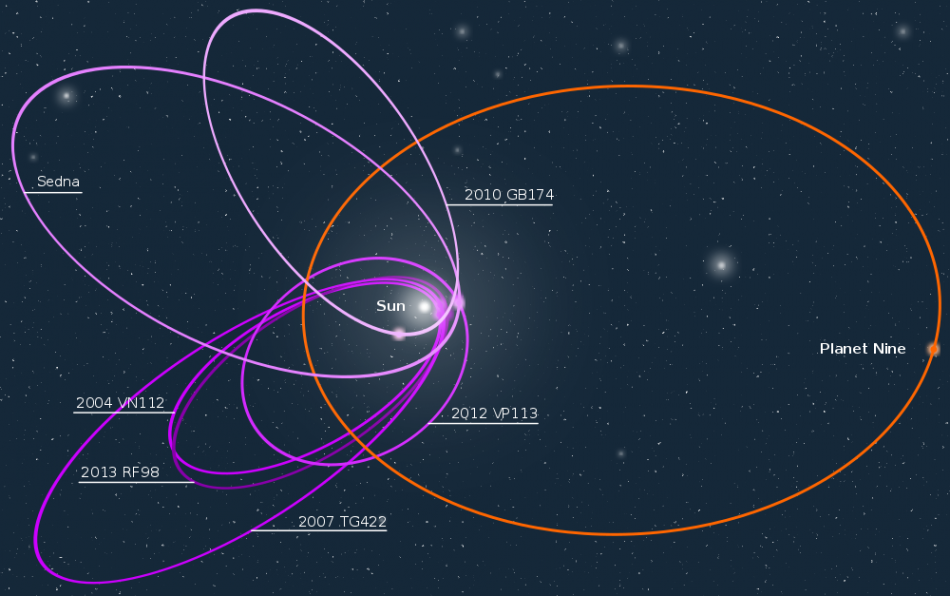
The orbit of hypothetical planet Nine shown with orbits of other trans-Neptunian objects. Image by MagentaGreen is in the public domain.
As the ‘Astronomy Public Engagement Leader’ at the University of Southampton, part of my role is to talk about my own research into Supermassive Black Holes, and talk about how we detect them by looking for the electromagnetic radiation that is detected from material near the edge of the black hole. Luckily, the idea of black holes and the weird goings-on near their event horizon really excites peoples’ imagination.
I love talking to people about black holes, but one of the most popular questions I get asked is ‘where is the nearest black hole to us?’ and I always feel bad saying ‘We don’t know’. The problem is that as well as the supermassive sized black holes there are actually many smaller, stellar-sized black holes dotted about inside our galaxy, but unless they are ripping material from nearby stars they don’t give off any radiation that we can detect, so we just don’t know they’re there.
Despite being difficult to detect, we know that Black holes exist, it has been scientifically proven. Nothing else in Physics can describe what we observe. For example, there are 6 stars orbiting the centre of our very own Milky Way galaxy and you can see these with powerful telescopes such as the Keck Telescope2. However, the central object these stars are orbiting around cannot be detected; it is invisible. Astronomers can measure the speed of each of the stars and, using Newton’s Laws of Universal Gravitation, they can calculate that this central, invisible mass, must be at least 4 million times more massive than the Sun. There is nothing in Physics that can be this massive and not emit any radiation, nothing except a black hole! So they simply must exist.
The fact that there is a supermassive black hole that exists at the centres of all galaxies is quite an intuitive concept. You just need to look at a photo of our nearest neighbour galaxy – the Andromeda galaxy – or any other spiral galaxy that takes your fancy, and it is easy to imagine the billions of stars all swirling around the black hole at the centre.
But – returning to our own solar system, and the theoretical planet 9 – what is a primordial black hole (PBH) and what would that look like? And how can there be one of these in our solar system that we have never detected?
The word ‘primordial’ means something that has existed since the beginning of time, therefore these ‘primordial black holes’, if they exist – they are still only a theory at the moment – have been around since the Big Bang, at the beginning of our Universe.
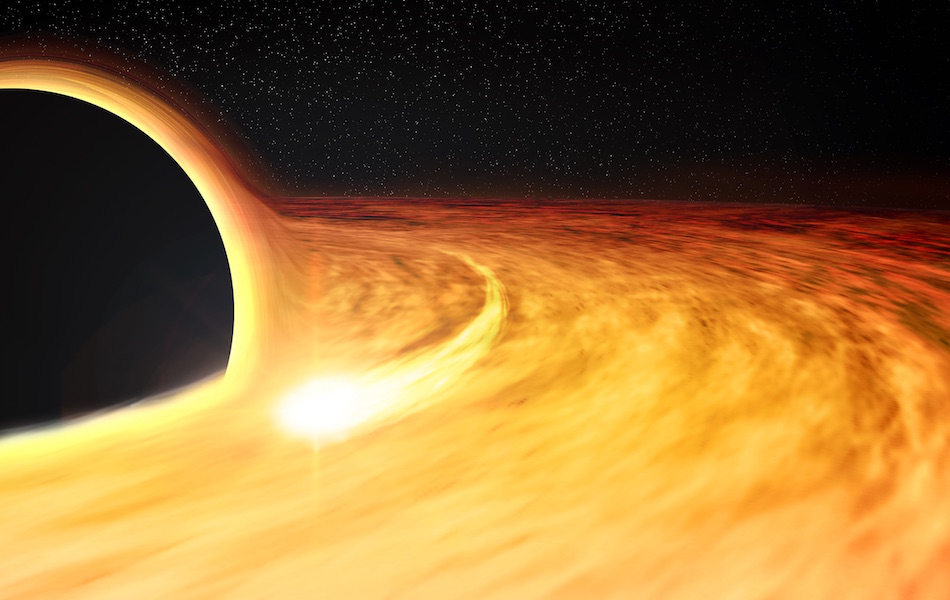
Image by NASA/CXC/M. Weiss via ESA
In order to create a black hole all you need is an area of space with such a high density of matter that it collapses in on itself. In the early Universe there were many regions where the density was higher and these black holes could have formed. Unlike stellar-sized black holes, primordial black holes are not thought to have been created by a collapsing star, because they are so old they predate the existence of stars themselves.
Stephen Hawking theorised that these primordial black holes could range from as small as 0.000000008 kg, the same mass as an eyelash, to several thousand times the mass of our Sun – as high as 1,000,000,000,000,000,000,000,000,000,000 (1030) kg.
In the paper1 that originally sparked my curiosity, they conclude that a primordial black hole that is 5 Earth masses (3 x 1025kg) could explain the anomalous orbits of the minor planets beyond the orbit of Neptune, and that this primordial black hole would have a diameter of 9cm.
It turns out this PBH hypothesis is just one of the many possible explanations for what ‘Planet 9’ might be. Alternative ideas are that it’s just an extremely distant, massive planet that we are yet to directly observe, or that it doesn’t exist at all, and the strange orbits of the minor planets beyond Neptune can be explained by a clump of icy rocks3.
Whatever it is, the fact remains that astronomers have been trying to detect Planet 9 since 2014 when it was first hypothesised and they still haven’t been able to detect it now (in 2020). As more time goes on with no direct observation of this illusive planet and no detection of any radiation from that region, the more likely it seems that there could indeed be an invisible, primordial black hole lurking in our very own Solar System.
Want to know more?
- Scholtz, J., & Unwin, J. (2019). What if Planet 9 is a Primordial Black Hole?. arXiv preprint arXiv:1909.11090.
- Eisenhauer, F., Genzel, R., Alexander, T., Abuter, R., Paumard, T., Ott, T., … & Bonnet, H. (2005). SINFONI in the galactic center: young stars and infrared flares in the central light-month. The Astrophysical Journal, 628(1), 246.
- Sefilian, Antranik A., and Jihad R. Touma. “Shepherding in a self-gravitating disk of trans-neptunian objects.” The Astronomical Journal 157.2 (2019): 59.

